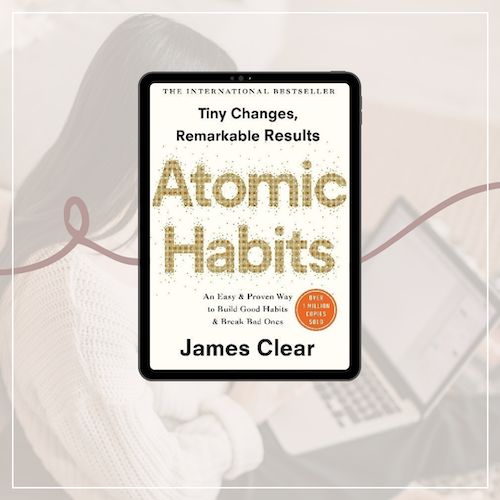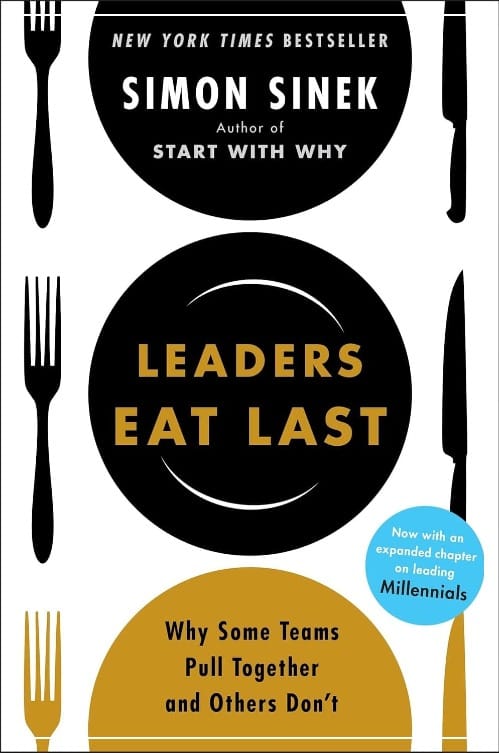Atomic Habits Summary: How Small Changes Lead to Big Results
Discover how Atomic Habits by James Clear reveals the power of small, consistent changes to transform your life. Learn key strategies for building good habits, breaking bad ones, and leveraging the compounding effect of 1% improvements every day.

Atomic Habits by James Clear has emerged as one of the most influential self-help books on habit formation and personal growth. Its central premise is that small, incremental improvements—referred to as "atomic habits"—compound over time and lead to remarkable transformations. The book teaches that by focusing on tiny, daily actions, you can achieve substantial long-term success, whether you’re trying to build good habits, break bad ones, or create a system for sustainable personal growth.
This detailed guide will break down the book’s key concepts, offer a summary of its lessons, provide helpful resources like Atomic Habits cheatsheets and quotes, and discuss the power of small improvements for long-term success.
Table of Contents
- What is Atomic Habits?
- Atomic Habits Summary: Key Concepts
- The Four Laws of Behavior Change
- Atomic Habits Cheatsheet: Practical Tips
- Atomic Habits Quotes
- Atomic Habits PDF and Audiobook
- The Power of Small Improvements
- Conclusion: Achieve Big Results with Small Habits
What is Atomic Habits?
At its core, Atomic Habits is a book about understanding and leveraging the power of small, incremental changes to create lasting improvements in your life. James Clear argues that success is not the result of a single life-changing event, but rather the culmination of hundreds of small actions performed consistently over time. The concept of "atomic" refers to both the size of the habits—small and easy to execute—and their power to accumulate into massive transformations.
Clear breaks down why focusing on these tiny habits is so effective:
- Habits are the building blocks of behavior: More than 40% of the actions you take each day are driven by habit. Whether you're aware of it or not, your habits dictate your productivity, health, and overall success.
- Small habits compound over time: Just as saving small amounts of money can lead to substantial wealth through compound interest, Clear argues that small habits also compound, leading to massive results. Improving by just 1% each day can make a huge difference by the end of a year.
Clear's approach to habit formation is grounded in the idea that small, consistent actions are more sustainable and achievable than radical overhauls. If you aim for steady, incremental improvement, your habits will build upon themselves, leading to far greater success than if you tried to make a drastic change overnight.
Atomic Habits Summary: Key Concepts
The book is packed with practical advice and research-backed strategies that explain how habits work and how you can apply these insights to build better habits or eliminate bad ones. Here are some key concepts from Atomic Habits that are crucial for understanding its practical applications:
1. 1% Improvement
Clear emphasizes that small, consistent improvements are far more effective than large, unsustainable changes. He uses the metaphor of an airplane adjusting its course by just a few degrees. Over time, that small adjustment results in the plane landing in an entirely different location. Similarly, if you focus on improving by just 1% each day, the results will compound and lead to huge improvements.
Real-life example: The British cycling team, which had not won a Tour de France in over a century, became dominant by focusing on making tiny improvements in every area of cycling. They focused on everything from the riders' diet to the pillows they slept on, resulting in a string of victories.
2. The Habit Loop
Clear introduces the concept of the habit loop to explain how habits are formed and reinforced. Every habit follows a loop of four stages:
- Cue: This is the trigger that starts the habit. Cues can be time-based, location-based, or emotional. For example, walking into your kitchen might cue you to grab a snack.
- Craving: The cue leads to a craving for a particular outcome. This craving is the motivation behind the habit. For instance, you might crave the feeling of relaxation that comes from eating a snack.
- Response: The response is the actual habit or behavior. In this case, it could be reaching for a cookie or opening a bag of chips.
- Reward: The reward reinforces the behavior, making you more likely to repeat the habit in the future. The snack provides a momentary feeling of pleasure or satisfaction, which reinforces the habit loop.
Understanding the habit loop helps you break bad habits by disrupting one or more of the stages, or build good habits by ensuring each stage is optimized.
3. Identity-Based Habits
One of the key ideas Clear emphasizes is the importance of identity-based habits. Instead of focusing on what you want to achieve, focus on who you want to become. This is a critical shift because it ties habits to your identity, making them more sustainable.

Example: Instead of saying, "I want to lose 20 pounds," shift your focus to, "I want to become someone who makes healthy choices." This identity shift influences your daily behavior, making it easier to stick to habits like eating nutritious meals or exercising regularly.
Key Insight: The more you reinforce an identity-based habit (e.g., "I am a writer"), the more likely you are to maintain the behavior that supports that identity.
The Four Laws of Behavior Change
Clear’s framework for building good habits and breaking bad ones is based on The Four Laws of Behavior Change. These laws simplify the process of forming new habits by offering practical steps you can implement immediately.
1. Make It Obvious
To establish a habit, you need to make the cue for that habit as clear as possible. The easier it is to notice a cue, the more likely you are to follow through with the behavior.
Actionable Tip: Use habit stacking to link new habits to existing ones. For example, if you want to build a habit of drinking more water, you could link it to an existing habit, such as eating lunch: "After I finish my lunch, I will drink a glass of water."
Example: If you want to work out in the morning, lay out your workout clothes the night before and place them in a visible location. This serves as an obvious reminder (cue) when you wake up.
2. Make It Attractive

Habits are easier to adopt when they are enjoyable or appealing. The more attractive you can make the habit, the more likely you are to stick to it. This involves using temptation bundling, where you pair a habit you want to build with something you enjoy.
Actionable Tip: Find ways to make a habit more enjoyable by combining it with something you already love. For example, listen to your favorite music or podcast while exercising.
Check out if you are looking to get back in shape:

3. Make It Easy
One of the key principles Clear emphasizes is reducing friction. The easier a habit is to perform, the more likely you are to do it. Clear suggests starting with habits that take just two minutes to complete (known as the two-minute rule).
Example: If you want to build a habit of reading every night, start by committing to read just one page before bed. Once the habit is established, you can gradually increase the time spent reading.
Key Insight: By making the habit easy to start, you lower the barrier to entry and make it more likely that you’ll follow through.
4. Make It Satisfying
A behavior is more likely to be repeated if the experience is satisfying. This means you should aim to create immediate rewards for completing your habit. Positive reinforcement helps reinforce the behavior and makes it more enjoyable.
Actionable Tip: Use a habit tracker to visually measure your progress. Each time you complete your habit, mark it on the tracker. The satisfaction of seeing your streak continue provides positive reinforcement.
Example: If you’re trying to build a savings habit, set small rewards for yourself when you reach savings milestones, such as $100 or $500.
Atomic Habits Cheatsheet: Practical Tips
If you’re looking for a quick overview of the strategies from Atomic Habits, here’s a cheatsheet of practical tips you can implement right away:
- Stack Habits: Link a new habit to an existing one. This technique, known as habit stacking, makes it easier to adopt new behaviors.
- Start Small: Use the two-minute rule to start habits that take very little time and effort. As the habit becomes ingrained, you can gradually increase the complexity or duration.
- Make It Visual: Track your habits by using a calendar, habit tracker, or app. The visual cue of seeing your progress reinforces the habit.
- Design Your Environment: Place cues for good habits in prominent places and remove triggers for bad habits. Your environment plays a crucial role in shaping your behavior.
- Use Temptation Bundling: Pair a habit you want to build with something you enjoy, making the experience more rewarding.
Read more on how to apply this to your team at workplace:

Atomic Habits Quotes
Atomic Habits is filled with inspiring and actionable quotes that summarize key concepts about habit formation, self-improvement, and personal growth. These quotes not only serve as motivation but also help readers understand the essence of building effective habits. Here are some of the best quotes from Atomic Habits:
“Habits are the compound interest of self-improvement.”
This powerful metaphor highlights how small habits compound over time, much like interest in a savings account. Even small improvements, if done consistently, can lead to significant results over time.
“You do not rise to the level of your goals. You fall to the level of your systems.”
Clear emphasizes that it’s not enough to set ambitious goals. Success comes from creating the right systems and processes that lead you toward your goal. In other words, your habits and routines dictate your outcomes more than your aspirations.
“The secret to getting results that last is to never stop making improvements.”
Continuous improvement is at the heart of Atomic Habits. The idea is to never settle for the status quo but to always seek ways to enhance and refine your habits.
“Every action you take is a vote for the type of person you wish to become.”
This quote underscores the idea of identity-based habits. Every small habit reinforces a particular identity. If you consistently act in alignment with your desired identity (e.g., being a writer, a runner, or a healthy eater), you are casting votes for becoming that person.
“It’s not about any single accomplishment. It’s about the cycle of endless refinement and continuous improvement.”
Success is not about reaching a particular destination but about maintaining a mindset of consistent growth and improvement. This quote encourages readers to focus on the journey of personal development rather than just the outcome.
These Atomic Habits quotes provide both inspiration and practical wisdom for anyone looking to improve their life through better habits. To explore more insights and hear James Clear’s ideas directly, consider listening to the Atomic Habits audiobook for a more immersive experience.

Atomic Habits PDF and Audiobook
If you’re interested in consuming the content of Atomic Habits in different formats, the Atomic Habits PDF and Atomic Habits audiobook offer convenient alternatives to reading the book in print. These formats allow for more flexibility, enabling you to learn Clear’s principles on the go, during your commute, or while multitasking.
- Atomic Habits PDF: The PDF version is perfect for readers who prefer digital formats that can be accessed on any device, whether a tablet, phone, or computer. The PDF includes all the key ideas from the book and allows you to highlight, bookmark, and refer back to important sections easily.
- Atomic Habits Audiobook: The audiobook version is ideal for those who want to listen to the content while driving, exercising, or during their daily routine. Narrated by James Clear himself, the audiobook offers the added benefit of hearing the author's tone and emphasis, providing a more personal experience. You can find the audiobook on platforms like Audible or other audiobook services by visiting Atomic Habits audiobook.
Both the PDF and audiobook formats allow you to absorb the concepts of Atomic Habits at your own pace and revisit key sections whenever needed.
The Power of Small Improvements
One of the key principles that Atomic Habits champions is the idea that small improvements compound over time. This concept is based on the mathematical idea of compounding, where even a 1% improvement each day leads to exponential growth over time.
The Math Behind Small Changes
Clear explains that if you improve by just 1% each day for a year, you will end up 37 times better by the end of the year. This small but consistent improvement doesn’t seem significant day-to-day, but the results are extraordinary when compounded over time. Similarly, if you get 1% worse each day, the reverse happens: you’ll diminish over time.
Here’s the simple math:
- 1.01^365 = 37.78
- 0.99^365 = 0.03
This mathematical explanation underlines the power of small actions and why it’s more important to focus on daily habits rather than short bursts of intense effort.
Real-Life Example: The British Cycling Team
Clear often references the British Cycling Team as a real-world example of the power of small improvements. For over a century, British cyclists had failed to achieve any major victories in the Tour de France or other prestigious competitions. However, starting in 2003, the team adopted a strategy called the "aggregation of marginal gains." They focused on improving every aspect of cycling performance by 1%, from the cyclists' nutrition to the aerodynamics of the bikes, to the quality of the pillows they slept on.
This seemingly insignificant focus on tiny improvements led to an unprecedented run of success, including several Tour de France victories and Olympic gold medals. This approach to small improvements can be applied to any area of life: health, fitness, career, and relationships.
Key Insight: Success doesn’t come from one grand gesture but from a series of small, consistent actions.
Applying Small Improvements in Your Life
- Health: Instead of overhauling your diet or committing to an intense workout regimen, focus on improving small aspects of your routine. Drink one more glass of water each day or take a 10-minute walk after meals.
- Career: In your professional life, seek small improvements in productivity. For example, declutter your workspace, spend an extra 10 minutes each day learning a new skill, or organize your tasks in a more efficient way.
- Personal Development: Focus on reading just one page of a book each day, meditating for two minutes, or writing a single sentence in your journal. These small habits will compound over time, leading to significant personal growth.

Achieve Big Results with Small Habits
Atomic Habits teaches us that the key to achieving extraordinary results is to focus on small, incremental changes rather than aiming for drastic transformations. Clear’s framework, based on the Four Laws of Behavior Change, provides a practical roadmap for building good habits and breaking bad ones. By making your habits obvious, attractive, easy, and satisfying, you can design your environment and systems to support your long-term goals.
Whether you’re looking for an Atomic Habits summary, a cheatsheet for practical tips, or inspirational quotes, the book offers actionable advice to help you create lasting change in any area of your life. The key takeaway is that small habits compound over time, leading to massive success if practiced consistently.
If you like this, check out our New York Times Bestseller List:








